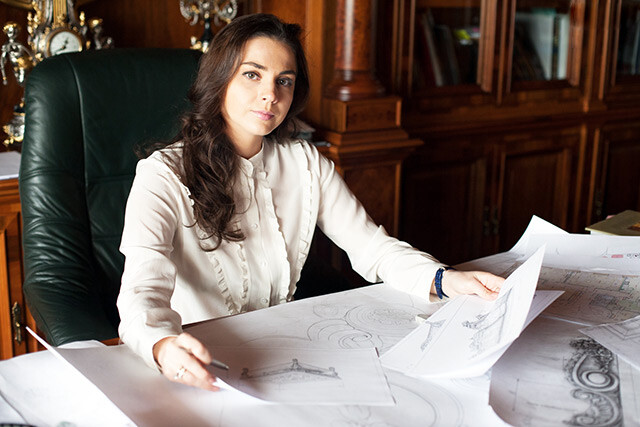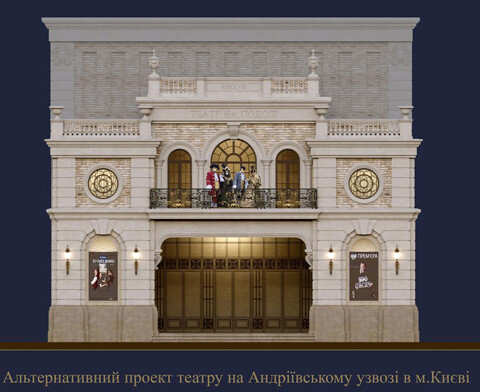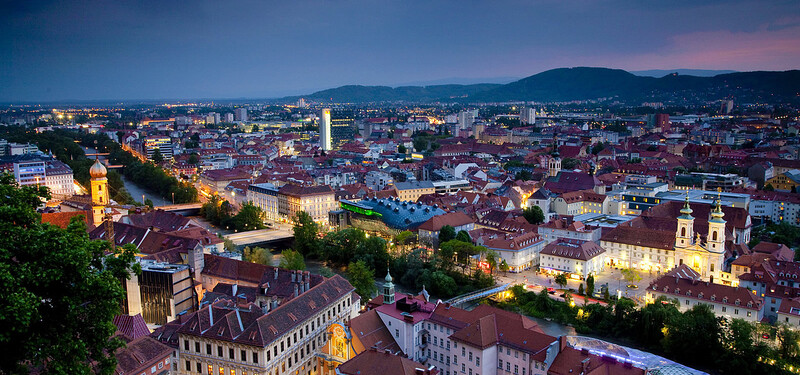13 февраля
Progress or heritage discuss with the architect Krystyna Stavska
As the new building of the Podol`s Theater on in Kiev, Ukraine opened eyes to the problem of modern architecture in the historical districts of Kiev.
The project on the Podol`s Theater on in Kiev, Ukraine
In the modern world, where the race of technology and the struggle for advanced solutions between countries replaced the "crusade" campaigns for new territories, the greatest task facing decision-makers was to preserve national heritage and historical values.
Where is the golden mean between progress and heritage?
A sensational story with a new theater building on the hem excited the public. But why should we learn from our mistakes? European countries have developed a clear sequence of work in historical areas. Let's borrow this experience.
Architects are able to change the heritage sites, add new buildings to the historical environment, but by interpreting the supporting value of the national heritage.
The alternative project of the Podol`s Theater
Not to mention the economic feasibility and public benefit. Without conditionally in these discussions, our time is short of strong oppositionists on the side of environmental and public organizations. Someone can call the position of preservation - anti-development, and even anti-progressive. But I believe that no one cancels the right of a new generation of architects to a creative expression by the means of modern architecture.
Doing only this requires a deep study of the consequences for the architectural environment.
The brightest example, when a thorough study of the terrain of future construction, and an incredible strong idea, has tried modern avant-gardism with a conservative history.
Kunsthaus in the city of Graz, "friendly aliens" which became a symbol of the historic city. Museum, Gallery of Modern Art, opened in the framework of the program "European Capital of Culture" in 2003.
The concept of the building was developed by London architects Peter Cook and Colin Fournier.
We were so knowledgeable about the work of Grazer Schul and his features, as we were good friends with the majority of supporters, and since we very well understood the importance of this project as a symbol on the west side of Hauptbrucke, the main bridge across the river in the city center, Sought to make a simple statement that would not imitate either the ensemble of the market to the east nor the magnificent castle on the hill that holds the gaze until it reaches the corner of the bridge.
As in the case of the Theater in Podol, the locals of Graz were not happy with the concept of the new museum. It was a situation of "go away or die" when a building that was 70% rejected by local residents when considering the project was approved 100% after the official launch.
Kiev is developing with an irresistible speed, but unfortunately, there is no vector capable of uniting the efforts of all developers in the right direction. Changes in the urban situation are inevitable. Areas, streets, buildings evolve in accordance with the needs of their inhabitants, whether the role of modern architecture and the classical heritage is independently determined, or not. Therefore, it is extremely important to assess the impact of development for both historical areas, and for the city, region, country.
Determine the evaluation criteria offered in Europe on the "the three Cs" system:
"certainty" The certainty in the planning system of what constitutes an appropriate development;
"consistency" Consistency in the adoption of government decisions;
- "consultation" Communication and consultation between government decision-makers and the development sector to create successful results.
Thus, it is necessary to create effective tools for the objective regulation of construction. That would allow to define a vector in the planning system for positive results of anthropogenic activity.
Limitation of altitude, in accordance with the development plan for a given area;
recommendations and requirements for the materials used;
qualitative assessment of technical solutions for efficiency;
mandatory inheritance of style solutions district;
- functional zoning of objects on typical grounds.
And more importantly, the regulation of architectural activities should be permanent and ubiquitous, and not only in cases where there is a monument of architecture or the construction of a historic district.
As one of the quickest solutions can be the creation of a public organization like SAVE Europe's heritage, ALIPH, UNESCO, which successfully combats the destruction of historic buildings and the destruction of cultural heritage.
And do not be afraid of such difficult tasks.
As the secretary of the SAVE organization Adam Wilkinson admitted:
We often have difficulties related, in particular, and with businessmen who want to rebuild or even demolish the architectural landmark. To discourage entrepreneurs from such actions, SAVE offers alternative solutions, commercially effective schemes that do not provide for monuments destined to be destroyed. For example, an investor purchases real estate in Italy: two nearby buildings, one of which is an architectural monument, and the other is not. In this case, the restoration and maintenance of the first is carried out at the expense of the income from the operation of the second.
Let's make this world beautiful!















